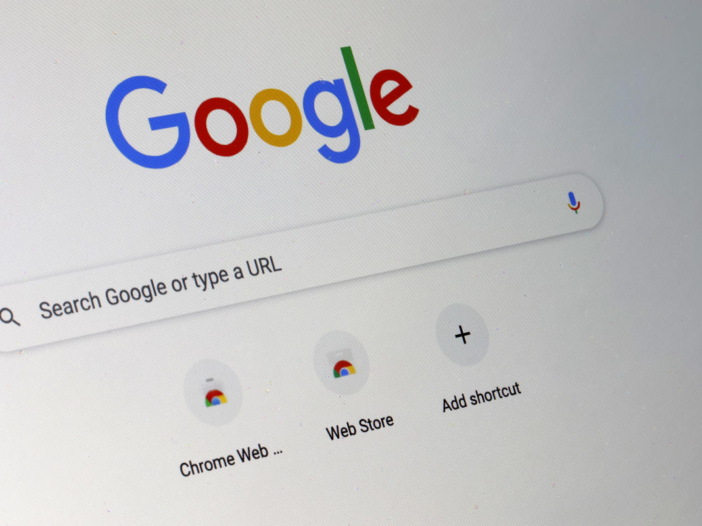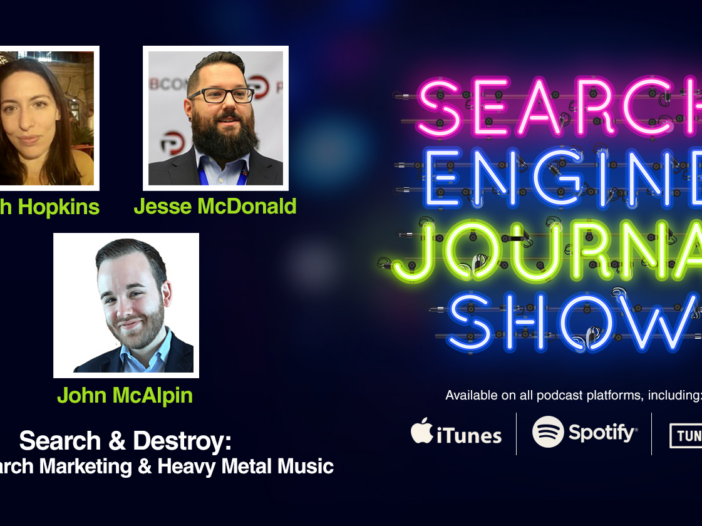Join this leadership discussion for proven techniques to build long-term relationships and keep your clients coming back.
Discover the latest trends, tips, and strategies in SEO and PPC marketing. Our curated articles offer in-depth analysis, practical advice, and actionable insights to elevate your digital marketing efforts.
In this guide, industry experts explore the challenges and opportunities presented by the onslaught of AI tools, and provide actionable tips for thriving amid these shifts.
Discover the latest trends, tips, and strategies in SEO and PPC marketing. Our curated articles offer in-depth analysis, practical advice, and actionable insights to elevate your digital marketing efforts.
Join three of Reddit’s top executives in this exclusive AMA (Ask Me Anything) to discover how you can tap into Reddit’s unique platform to drive brand growth.
Join this leadership discussion for proven techniques to build long-term relationships and keep your clients coming back.
Podcast: Download
Subscribe: Apple Podcast Google Podcasts Spotify
Loren Baker’s guest today on the SEJ Show is Cindy Krum, Founder of Mobile Moxie.
Cindy and Loren will be discussing Passages, Sub Topics, Loss of clicks to Google stuff, and the Future of SEO!
Managing Partner / Owner at Search Engine Journal with over 18 years experience in Digital Marketing, specializing in Reddit, Search …
Conquer your day with daily search marketing news.
Join Our Newsletter.
Get your daily dose of search know-how.
In a world ruled by algorithms, SEJ brings timely, relevant information for SEOs, marketers, and entrepreneurs to optimize and grow their businesses — and careers.
Copyright © 2024 Search Engine Journal. All rights reserved. Published by Alpha Brand Media.
Shift AI Podcast: ‘Chill work’ as the path to productivity, with Rand Fishkin of SparkToro – GeekWire
Google is changing its search results to weed out SEO spam – Engadget
Amid complaints that its search results have declined in quality, Google is tweaking its algorithms to do a better job of weeding out spammy or automated content. The company says the ranking updates, arriving in May, will “keep the lowest-quality content out of search.” Of particular note, Google says its engine will be better at eradicating today’s automated (read: AI-generated) content that’s harder to spot.
Google says it’s taking what it learned from a 2022 algorithmic tuneup to “reduce unhelpful, unoriginal content” and applying it to the new update. The company says the changes will send more traffic to “helpful and high-quality sites.” When combined with the updates from two years ago, Google estimates the revision will reduce spammy, unoriginal search results by 40 percent.
“This update involves refining some of our core ranking systems to help us better understand if webpages are unhelpful, have a poor user experience or feel like they were created for search engines instead of people,” Google product management director Elizabeth Tucker wrote. “This could include sites created primarily to match very specific search queries.”
Google sounds like it’s targeting AI-generated SEO spam with its notes about scaled content abuse. The company says it’s strengthening its approach to the growing problem of sites that generate garbage automated articles (as well as zeroing in on old-fashioned human-created spam).
“Today, scaled content creation methods are more sophisticated, and whether content is created purely through automation isn’t always as clear,” Tucker said. Google says the changes “will allow us to take action on more types of content with little to no value created at scale, like pages that pretend to have answers to popular searches but fail to deliver helpful content.”
AI-generated content farms shotgun-blasting content to game the system are an increasing problem, so Google’s changes — if they’re as effective as promised — will be welcome. Although sites spamming that content exclusively may be easier to spot, it will be interesting to see if scenarios where once-reputable outlets experimenting with AI-generated spam (CNET and Sports Illustrated are recent examples) will be affected.
Another change to the algorithm will tackle the practice of otherwise reputable sites hosting low-quality content from third parties designed to leech off the site’s good name. Google provides the example of an educational site hosting a third-party payday loan review. “We’ll now consider very low-value, third-party content produced primarily for ranking purposes and without close oversight of a website owner to be spam,” Tucker wrote.
Finally, Google’s updates will allegedly do better at rooting out expired domains bought by someone else and transformed into click mills. The search engine will begin treating those websites as spam.
You won’t see the improvements immediately as Google is giving site owners a two-month notice to adapt accordingly. The search engine changes will take effect on May 5.
The NLRB claims that Grindr violated federal labor law by attempting to thwart unionization efforts with a return-to-office mandate.
Amazon just unveiled X-Ray Recaps for Prime Video. This AI toolset will recap shows and movies that people are watching.
Netflix is removing a whole lot of its interactive content. Some titles, like Bandersnatch, survived and will continue on via the platform.
The JBL Clip 5 has dropped to an all-time-low price of $50 in an early Black Friday deal. The small, portable clip-on Bluetooth speaker should come in handy for your next cookout or beach trip.
Meta is opening up its Llama AI models to government agencies and contractors working on national security, the company said in an update.
The PS5 Pro comes out in just a few days and Sony has outlined all of the games that will offer enhanced versions at launch. This totals more than 50 titles.
After years of waiting and requests, Amazon debuted the $280 Kindle Colorsoft, its first ereader with a color display. Amazon’s promising the Colorsoft gets color E Ink implementation right thanks in part to the custom tweaks it made to the display. And, unsurprisingly, Amazon’s ready to charge you a premium for it. So is it all it’s cracked up to be?
Apple accidentally let a disguised illegal streaming app through, and it's now still on the App Store.
Meta has shared more information about how it plans to use AI to catch teens who lie about their age on Instagram.
The new Kindle Paperwhite Signature Edition is a remarkably premium ereader, but is it worth $90 more than the standard Kindle?
Flight Simulator 2024 headlines the first batch of Game Pass additions for November. Other newcomers include Metal Slug Tactics and Goat Simulator Remastered.
We're rounding up all of the early Black Friday deals that are worth your attention in one easy place.
It's 55 percent off its sticker price.
It's available now to stream.
Here are the best board gifts you can gift this year, including family games, tabletop games and everything in between.
Elon Musk's X has implemented a controversial change to the block function first announced in September.
The latest iPad Mini has dropped by $100 only days after it arrived. The seventh-gen model is powerful enough to support apple Intelligence features.
The biggest news stories this morning: Meta’s Orion prototype hands-on, Amazon Prime’s free games for November include Dishonored and Guardians of the Galaxy, Election 2024: What will the candidates do about the digital divide?
Tools like an ergonomic mouse can help improve posture and keep our bodies in a more natural orientation while we work. We tried a number of ergonomic mice to find the best ones you can buy right now.
Cartoon Network and Aardman Animations have released a stop-motion short to celebrate the 10th anniversary of Over the Garden Wall. It features the original voice actors, including Elijah Wood.
Subscribe to our two newsletters:
– A weekly roundup of our favorite tech deals
– A daily dose of the news you need
Please enter a valid email address
Please select a newsletter
By subscribing, you are agreeing to Engadget's Terms and Privacy Policy.
Jared Bauman Discusses SEO and AI at DMLA Conference Aboard WWII Aircraft Carrier in New York City – EIN News
Digital Minds Group wins OneMusic digital and SEO account – AdNews
AdNews Newsletter
Independent agency Digital Minds Group has been appointed to manage paid digital media and SEO for OneMusic.
OneMusic licenses the public performance of musical works and sound recordings in Australia.
APRA AMCOS chief marketing officer Kirsty Davison said digital continues to be at the core of business focus.
“We were impressed by the demonstrated track record and metric-based approach Digital Minds Group demonstrated,” Davison said.
“We’re excited to embark on this partnership together and drive growth and scale for the benefit of our music creators.”
Digital Minds Group general manager Lija Wilson said this is a fascinating opportunity.
“We feel very privileged to have been awarded this opportunity to support the OneMusic team on this next phase of growth and diversification through our specialisations across SEO, Paid Digital Media and Performance Creative,” Wilson said.
Have something to say on this? Share your views in the comments section below. Or if you have a news story or tip-off, drop us a line at adnews@yaffa.com.au
Sign up to the AdNews newsletter, like us on Facebook or follow us on Twitter for breaking stories and campaigns throughout the day.
The AdNews enewsletter, brings you the latest advertising and media news direct to your inbox! Become a member and get the weekly newsletter free!
We acknowledge the Traditional Custodians of country throughout Australia and their connections to land, sea and community. We pay our respect to Elders past and present and extend that respect to all Aboriginal and Torres Strait Islander peoples.
Search & Destroy: SEO, Search Marketing & Heavy Metal Music [PODCAST] – Search Engine Journal
Join this leadership discussion for proven techniques to build long-term relationships and keep your clients coming back.
Discover the latest trends, tips, and strategies in SEO and PPC marketing. Our curated articles offer in-depth analysis, practical advice, and actionable insights to elevate your digital marketing efforts.
In this guide, industry experts explore the challenges and opportunities presented by the onslaught of AI tools, and provide actionable tips for thriving amid these shifts.
Discover the latest trends, tips, and strategies in SEO and PPC marketing. Our curated articles offer in-depth analysis, practical advice, and actionable insights to elevate your digital marketing efforts.
Join three of Reddit’s top executives in this exclusive AMA (Ask Me Anything) to discover how you can tap into Reddit’s unique platform to drive brand growth.
Join this leadership discussion for proven techniques to build long-term relationships and keep your clients coming back.
In this podcast episode, we talk about the correlations between metal and SEO together with fellow metalheads in the search industry.
Podcast: Download
Subscribe: Apple Podcast Google Podcasts Spotify
For episode 201 of The Search Engine Journal Show, we have a special panel composed of fellow metalheads in the search industry:
In today’s podcast, we decided to have a little fun. We love metal and we also love all things search, so we figured why not put the two together?
It turns out there’s a lot of correlations between metal and SEO.
A Stack Overflow study found that metal, including black and death metal, is a popular genre, especially in coding because it improves productivity and focus.
Pandora developer Rob Whitlock said the following:
“When I hear clean singing, my brain starts tracking what they’re saying and it’s distracting. But with the vokills, it’s just a sound. You don’t think about what they’re saying so it just fades into the background.”
“If I know I’m going to be at a task for a long time, I’ll put black metal on,” Whitlock added. “Especially if it’s something I’m a bit sad about doing. … Black metal is emotionally evocative in a way that death metal isn’t. There are times when you’re coding and you sort of need that emotional awareness.”
Let’s dive into our most metal edition ever.
Navah Hopkins (NH): It’s actually really funny. If my day doesn’t start with a very specific mix of what I call power songs, I am stressed out the entire day.
I very specifically need at least 90 minutes of listening to songs. I’m a little bit different than the study.
I actually need really pretty clean vocals, so I’m the other side of metal. But if I don’t begin my day with that 90 minutes, not only am I not as productive, I tend to lose even more hours out of what I can do, creative, analytical tasks.
So my mornings tend to be very focused on creating content for public speaking thought leadership, but then also for client accounts, the ones that are a little trickier, and I’ll put those in the morning when I’m listening to that music, starting my day off well.
If, however, I have a lot of back-to-back calls or meetings, and I can’t recharge with a song in between, every subsequent meeting gets worse and worse and worse, every subsequent task gets worse and worse and worse.
So I don’t want to say something as trite as “listening to music is as important to me as oxygen”, but at least for my mental health and my productivity, it’s very close there.
John McAlpin (JMA): Metal is kind of my secret weapon when working because I tend to listen to a lot of different things while I’m working.
I have severe tinnitus and ADHD, so that combined, I have to have some kind of external stimulus outside of work. And so for me, metal does two things.
One, I do like the concept of not listening to the vocals or the lyrics so much, but to me it’s more of the rhythmic.
When you have a really good breakdown or a fast section, it really makes me feel like I’m in a flow and it helps trigger my brain into a faster way of thinking, so I’m a little bit sharper.
And I think, especially if I have a big pitch, or I’m making a big audit where I really need to display confidence, it helps give me that confidence whenever I’m working.
Jesse McDonald (JMD): That’s what’s interesting for me, I actually feel like music is as important as oxygen to me.
I need it to get through the day. It’s been that way for a really long time for me.
So an example of the productivity thing that I’ve had from a couple of years ago, I got a buddy into the band Animals as Leaders, which is a very progressive instrumental band.
He was all about them, listening to them like crazy whenever he would work.
And I would try, but I wouldn’t be able to focus. I was always paying more attention to what the music was doing.
And I kind of determined that it was because it was instrumental.
So I started working on a WooCommerce site that I had to edit very heavily, and I found that the thing that kept me going was listening to The Dillinger Escape Plan on repeat.
And if you haven’t heard Dillinger Escape Plan, they kind of fall into this progressive mathcore type thing, which is very dissonant and chaotic.
Listening to the songs, “Milk Lizard”, “Black Bubblegum”, and “Prancer” on repeat got me through two weeks of editing that WooCommerce site.
Anything else I listened to, I would not focus. It was weird.
And if you go listen to them, it’s weird that it worked for me, but for some reason that chaos gets me.
It keeps everything out of my head and lets me focus on one thing.
I listen to it when I go to sleep. Same thing, that’s how I fall asleep is listening to something like that because it narrows my focus.
So I find productivity big time when I’m listening to crazy chaotic metal.
NF: There’s a story in a lot of songs that speaks to something greater than ourselves.
Like if we can be the champion that vanquishes evil, if we can be the devil calling in the seventh son of the seventh son, if we can harness all of that power, there’s something very special about that.
And the gift of metal is that it makes that accessible to not just one person, it makes it accessible to all.
So translating that to marketing, how do we identify the personas that will best identify with the message that we’re trying to put out there, and modify it so that it speaks to the correct user?
Metallica did a cover of Pokémon.
That is the exact kind of content that you would want to put in front of a kid to get them hooked on Metallica and follow that trajectory, as opposed to exposing them to, I don’t know, “One”.
It’s a slower song. It’s going to be more difficult for a kid who’s very energetic, I mean there are exceptions always, but to get them into it.
So just understanding your messaging.
JMD: What’s interesting about a lot of metal bands, and especially early to mid-2000s, especially the new wave of American metal, so bands like Lamb Of God, and Trivium, and Unearth, and Killswitch Engage, they were all trying to do new stuff every time they would put out a new album…
While that’s a lot of technique-based issues, they would constantly change stylings.
So you’re having this progression constantly, but the focus on quality is always there.
That kind of translates back to what you’re trying to do with anything related to search, especially when it’s content-related.
You’re always looking to evolve, but you have to make sure the quality’s there, because if the quality is not there, then it’s not going to resonate with people…
JMA: I think it’s really interesting to me, the bands that you liked and then didn’t like based on social norms.
I remember growing up really liking certain bands, and some people were like, “Oh, that’s not cool to like.”
And so I guess when you’re younger, you’re like, “OK, so I should probably not like that band anymore.”
And when you get older, you’re like, “Why the hell did I stop listening to that band? They’re still great.”
Like I saw Keith Goode in the comments bring up Cradle of Filth.
And I remember listening to that in high school, and then someone’s like, “Really? Black metal? That’s weird.”
And then I come back and like, “That was a good song. What am I talking about?”
So you got to be loyal to what you like…
Danny Goodwin (DG): I think the big thing is knowing your audience, and knowing when it’s OK to do that evolution…
I don’t think Opeth could have gone from “Blackwater Park” to the Pink Floyd style… There was a transition there, and I assume that they felt like their audience was ready for that.
JMD: Probably. I mean they basically made it up, and their story’s, at this point, so expanded, and lied about, and everything that yeah, they probably are the most controversial band ever.
JMA: Yeah, so much mythology behind it now, too.
DG: They’ve created this whole mythology around the band, which, it’s pretty impressive. It just grows, and does its own thing…
JMA: I mean brands could do the same thing too. If you can create a brand mythology and things like that.
I think Disney is a good one. There’s a whole lot of controversy and mythology behind Walt Disney himself, yet they still are on top.
NF: In speaking to the times that we live in, no matter what side you come out on, you will be controversial in your opinion to the other side.
It’s kind of understanding, “Do I care that there’s controversy? Is my core customer going to care that I am being [fill in the blank]?”
In terms of controversy, the band that comes to my mind is actually Ghost. Interesting vocals, interesting sound.
He basically has the entire band enslaved, yet we all go and cheer on those songs because, of course, we do and it’s just at what point is controversy useful.
It’s sharpening that edge in marketing, that edge in content, versus what is just terrible.
This podcast is brought to you by Ahrefs and Opteo.
Visit our podcast archive to listen to other Search Engine Journal Show podcasts!
You can watch Search & Destroy: SEO, Search Marketing & Heavy Metal Music on YouTube.
Image Credits
Featured Image: Paulo Bobita
Danny Goodwin is the former Executive Editor of Search Engine Journal. He formerly was managing editor of Momentology and editor …
Conquer your day with daily search marketing news.
Join Our Newsletter.
Get your daily dose of search know-how.
In a world ruled by algorithms, SEJ brings timely, relevant information for SEOs, marketers, and entrepreneurs to optimize and grow their businesses — and careers.
Copyright © 2024 Search Engine Journal. All rights reserved. Published by Alpha Brand Media.


